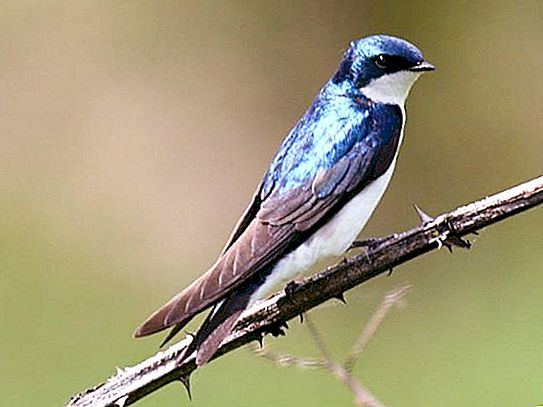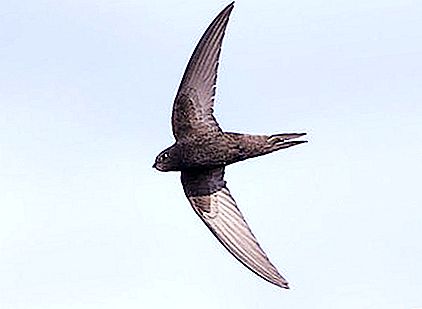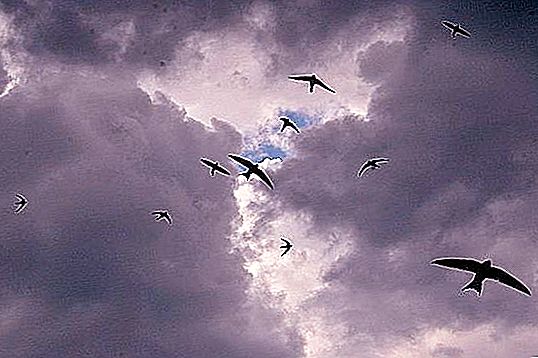How many of us have not looked at the swiftly flying small fast-flying birds with double tails, literally performing aerobatics, filling the air with piercing screams? It can be both a swallow and a swift. The similarity and difference of these birds, as a rule, is associated only with the length of the tail. However, this is not entirely true, or rather not at all. From afar, they actually look the same: in size, in color, and in the shape of their wings. Although these are completely different birds. So what is the difference between swallows and swifts?

Swallows
Swallow, or Latin Hirundinidae, belong to the species-rich family of passerines. In total, there are 75 species, of which ten are found on the territory of Russia.
Swallows make their homes from clay, mud or silt, adding straws, twigs, blades of grass and bonding it with their saliva.
They fly slower swifts. Their speed is usually about 50-60 km / h, but they are able to change the trajectory of their movement with lightning speed.
Swifts

Apodes - the so-called swifts in Latin. Belonging to the order of Swifts, they are divided into two families (crested swifts, Hemiprocnidae, which live in tropical Asia, and Swifts - Apodidae, which are found everywhere except in the polar regions), in which there are about 80 species.
Swifts equip their homes in caves, crevices of rocks, hollows. Some species, like swallows, build their nests from hardened saliva. People also mistakenly call these structures “swallow nests”.
Swifts, you can say, live in the air. Their crescent-shaped wings are simply designed for rapid flight. Some types of swifts can accelerate to more than 120 km / h.

Swallow and Swift: Similarities and Differences
External differences inherent in each particular species of these birds are more than enough. First of all, this concerns the structure of the legs. The swifts are very short, with all four fingers pointing forward. Such a structure does not allow these birds to sit on a branch or move on the ground. But it’s very convenient to catch even the slightest protrusion on a vertical surface, whether it is a rock or a wall of a building. The swallow, like most other birds, has one finger pointing back and three fingers forward. Therefore, they can safely sit, for example, on branches or wires.
In addition, they differ in color. In swallows, even quickly flying, a white speck can be seen on the chest. The second feathered representative in question does not have it. But this is not all the difference between swallow and swift. The similarity and difference in them is that the last one in flight never folds. Unlike swallows, swifts are characterized by their loudness. In addition, he is much larger than her, his wings are narrower and longer, besides having a crescent shape. Also, the swift has a shorter and wider tail. This bird can often be found in the city, and the swallow in the countryside.
Both the swallow and the swift, the similarities and differences of which can be considered indefinitely, are migratory birds. As soon as autumn comes, they rush to the southern hemisphere, so that later in the spring they return to their native lands and leave offspring after themselves.
Many birds, proverbs, sayings are associated with these birds. Like other birds, swifts and swallows are our reliable voluntary helpers in the fight against harmful insects. The last spring is associated with the latter, and, therefore, the chanting of love and life. No wonder cosiness of the home is associated with swallow nests. And swifts are associated with the summer, as they return to their homes the very last, bringing on their wings the warmth of distant lands.




